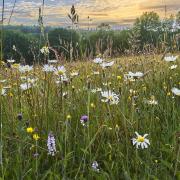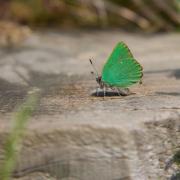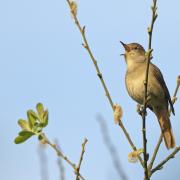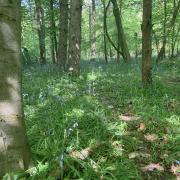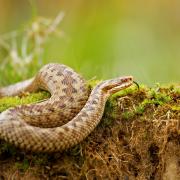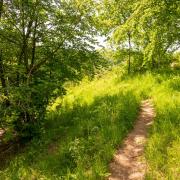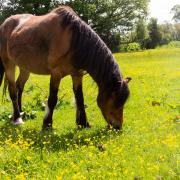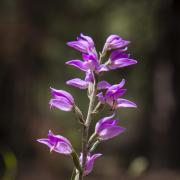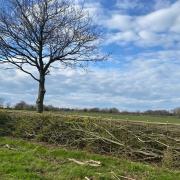The Cotswold beech woodlands are glorious in the autumn, the canopy turning to a golden brown colour, framing the countryside with a sepia tinge. This month Gloucestershire Wildlife Trust is searching the woodland floor for mushrooms with the most enchanting names such as Lion’s Mane and Honey Fungus
Wild mushrooms and toadstools are among the highlights of autumn, a multi-coloured and sometimes other-worldly spectacle of fungal bodies in all shapes and sizes.
Their presence is often enough to make walkers stop in their tracks and marvel at their strangeness and beauty.
Many species are also good to eat, although it’s always wise to be sure that a tasty looking mushroom has been correctly identified by an expert before picking and taking it home to be consumed, and that you adhere to the foraging code of conduct to prevent destroying good mushroom sites.
Few will have forgotten the famous incident back in 2008 when Nicolas Evans, author of The Horse Whisperer, cooked a meal with poisonous deadly webcaps that he had thought were edible ceps.
One way to learn about fungi, and find out more about their fascinating life cycles and the valuable work they do, is to join an organised foray.
Gloucestershire Wildlife Trust is one of the groups that lead such expeditions, the next of which takes place with Dr Lee Heyward of the Cotswold Fungus Group and Stroud Area Community Wildlife Officer, Ellen Winter within a Stroud area nature reserve on Wednesday, October 7. Meanwhile Arle Grove will be the location for forest fungi family fun on Thursday, October 22.
Various toadstools and mushrooms feature in our everyday lives, as foods and ingredients in medicines, and many play a crucial role in the general health of gardens and woodlands, helping to break down plant debris such as leaves and fallen wood along with organic materials such as manure and even dog faeces to release valuable nutrients back into the soil.
Certain mycorrhizal mushrooms, such as fibrecaps, have symbiotic partnerships with trees, helping their hosts to access all the water and nutrients they need.
Some fungi act as pathogens towards certain plant species: examples of this include Ramularia rubella, which keeps docks in check, and Phoma hedericola, which puts a dampener on the vigour of ivy.
Honey fungus is a name that can strike terror into the hearts of gardeners, who know that the appearance of these golden mushrooms signifies that a tree is riddled with disease and therefore doomed. Fewer are aware, however, that it sends out long root-like structures known as ‘rhizomorphs’ once it has finished off a host tree, and that these can go on to take hold of other older or suseptible plants within the same locations.
Gardeners finding honey fungus mushrooms will take little comfort in the knowledge that, for most people, they are edible, with Antonio Carluccio among the chefs who wax lyrical about their delicious flavour. Unfortunately, however, one in 10 people who eat this fungi may actually experience severe stomach upsets and cramps!
Other fungi that can provide clues to gardeners that all is not well are sulphur tuft, which in common with many toadstools, grows on dead roots, and artist’s bracket fungus, which can enter a plant through damage caused by pruning or strimming.
Meanwhile yellow dung roundhead is among the toadstools that grow on animal droppings and can indicate a well-manured soil.
Fungi are, for many people, one of the final frontiers of our knowledge; a strange and beautiful world just waiting to be explored. And there’s no better time than now to do it.




